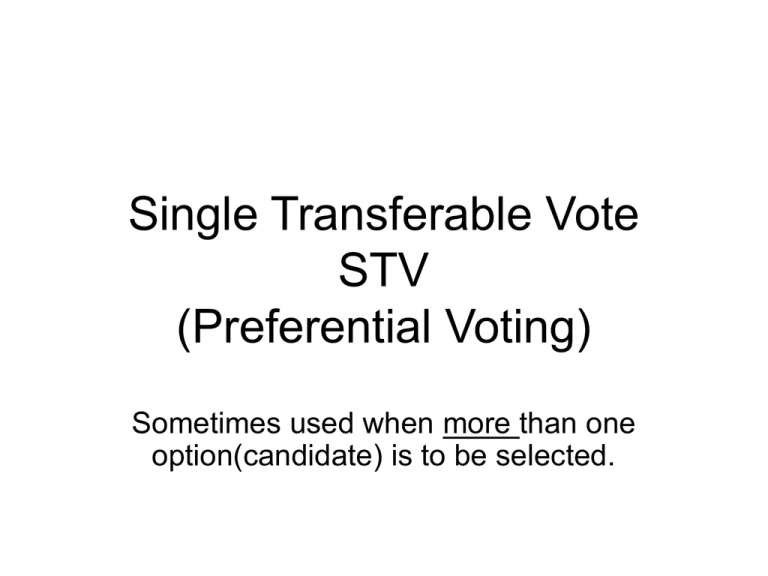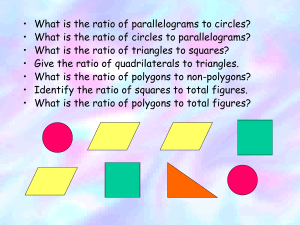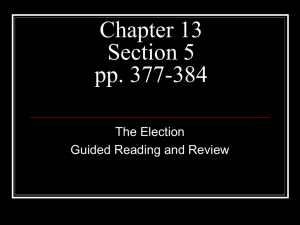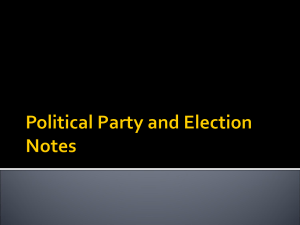Single Transferable Vote STV (Preferential Voting)
advertisement

Single Transferable Vote STV (Preferential Voting) Sometimes used when more than one option(candidate) is to be selected. STV • First proposed by Thomas Hare (English barrister) and Carl Andrae (Danish mathematician) in the 1850’s. • If used to elect a single winner, it is just the method of Hare elimination or sequential run-off we studied earlier. STV How does it work? An election using STV Suppose that we have 4 seats to fill on a local governing board, and that 50,000 votes are cast with 10 candidates running. Voters will use ordinal ballots to rank all 10 candidates. Step 1 • Set the quota or number of votes necessary to be elected. • This is done in such a way that no more than the required number of candidates can be elected. • Here we want to set it at the smallest value so that 4 candidates could be elected, but 5 could not be. Setting the Quota • How could 5 be elected? If they each received 50, 000 10, 000 votes. So we set the 5 quota at 50, 000 1 10, 001 votes. 5 votes • In general quota (q) = int where 1 seats 1 Int means ‘ignore any remainder’. Step 2 • Count the first place votes. • Elect any candidate(s) who meet or exceed the quota. • If no candidate meets the quota, eliminate the one(s) with the fewest first place votes and count again. • Continue until one or more candidates achieves quota. Step 3 • Reassign ‘extra’ votes. Here’s how it works… An example of vote transfer Suppose candidate A gets 900 more votes than the quota of 10,001. So that these voters don’t “waste” their votes, we reassign these 900 votes to the second place candidates on all the ballots having A first. Vote transfer (continued) Suppose candidate B was second on 30% of the ballots having A first, C was second on 42% and D second on 28% of those ballots. Then we would distribute 30% of 900 = .30(900) = 270 votes to B, 42% of 900 = .42(900) = 378 votes to C and 28% of 900 = .28(900) = 252 votes to D! Vote transfer (continued) • Thinking in terms of total votes (10,901) for A, each ‘extra’ vote is 900/10901 = .08256 of a vote. • Each voter who A ranked first would have this fraction of his vote transferred to his second choice. • B was second on 30% of 10,901 or 3270 ballots and so gets 3270(.08256)=270 votes. Vote transfer (continued) • Note: If two or more candidates go over quota, the larger surplus is distributed first. • If the distribution will not 1)elect a candidate or 2) keep a candidate from elimination, then it is not made, and the count progresses by eliminating the candidate with the fewest votes. • The process continues until all seats are filled. Why Use STV? • It helps to assure proportional representation for a voting constituency. • In plurality, only your first place vote counts, but with STV, if your first place vote doesn’t help elect that candidate, part of it will be transferred to help one of your lower choices. Midland Residents Association • Two seats available • 23 voters (13 conservative, 10 liberal) • 4 candidates Winston, Nadia—conservative, Winston more so Theo, Rudy—liberal, Rudy more so The Vote Conservative 7 Liberal 6 6 4 Winston Nadia Theo Rudy Nadia Winston Rudy Theo Theo Theo Nadia Nadia Rudy Rudy Winston Winston








